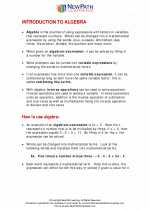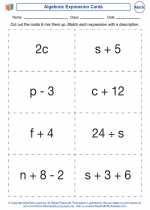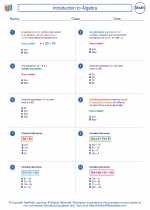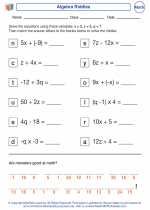Introduction to Algebra -> bar graph
Bar Graphs
A bar graph is a way to display data using rectangular bars. The length of each bar represents the quantity or frequency of the data it represents. Bar graphs are used to compare different categories of data or to track changes over time.
Parts of a Bar Graph
1. Title: The title describes the data being displayed.
2. X-axis: The horizontal axis represents the categories or groups being compared.
3. Y-axis: The vertical axis represents the frequency, quantity, or value being measured.
4. Bars: The rectangular bars represent the data for each category, with the length of the bar corresponding to the value it represents.
Creating a Bar Graph
To create a bar graph:
- Choose the appropriate categories for the x-axis.
- Choose a scale for the y-axis that allows all data to fit within the graph.
- Draw and label the axes, including titles and units of measurement.
- Create bars for each category, ensuring they are evenly spaced and proportional to the data they represent.
- Add a title to the graph.
Interpreting a Bar Graph
When interpreting a bar graph, consider the following:
- Which category has the highest bar?
- Which category has the lowest bar?
- Are there any trends or patterns in the data?
- What conclusions can be drawn from the comparison of the bars?
Example
Here's an example of a bar graph:
In this example, the bar graph compares the sales of apples, oranges, and bananas. It is clear that bananas had the highest sales, followed by oranges and then apples.
Study Guide
When studying bar graphs, make sure to:
- Understand the purpose and components of a bar graph.
- Practice creating and interpreting bar graphs using different sets of data.
- Identify the key features of a bar graph, such as the title, axes, and bars.
- Analyze the data presented in a bar graph to draw conclusions and make comparisons.
Remember to pay attention to the scales used on the axes, as these can affect the interpretation of the data.
With this information, you should be well-prepared to understand and work with bar graphs!
[Bar Graph] Related Worksheets and Study Guides:
.◂Math Worksheets and Study Guides Seventh Grade. Introduction to Algebra

 Activity Lesson
Activity Lesson
 Worksheet/Answer key
Worksheet/Answer key
 Worksheet/Answer key
Worksheet/Answer key
 Worksheet/Answer key
Worksheet/Answer key
 Worksheet/Answer key
Worksheet/Answer key
